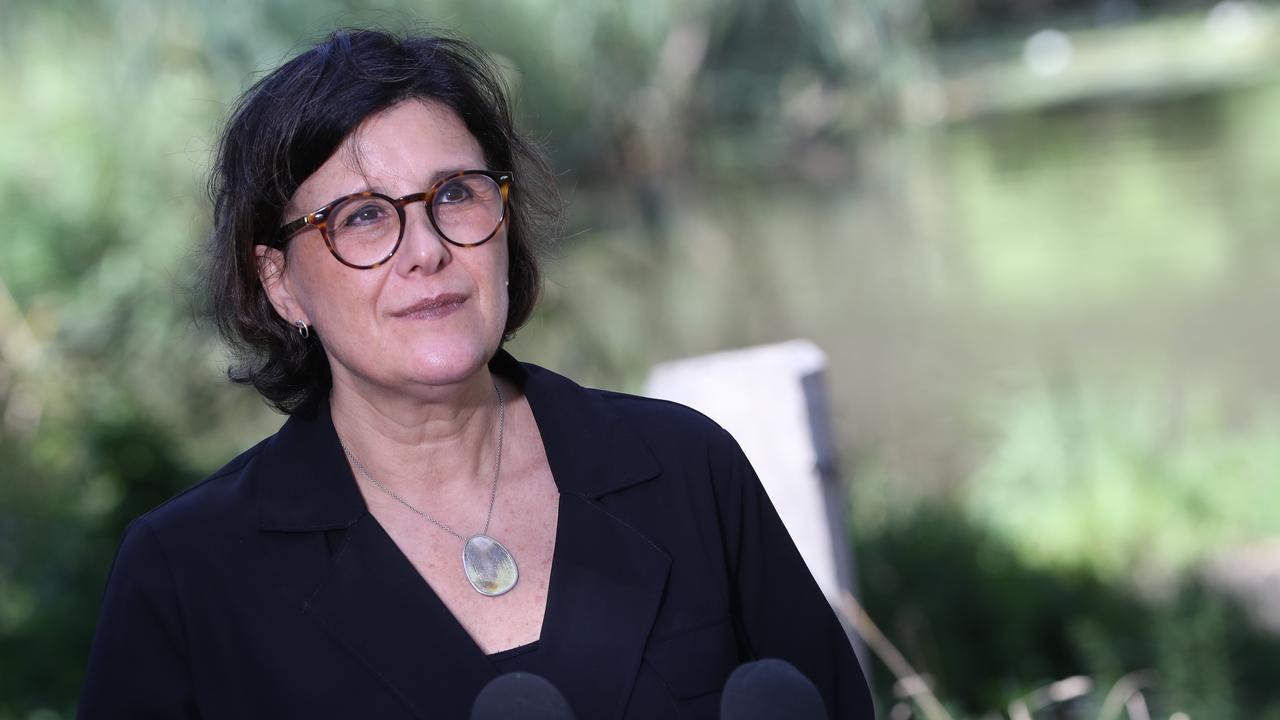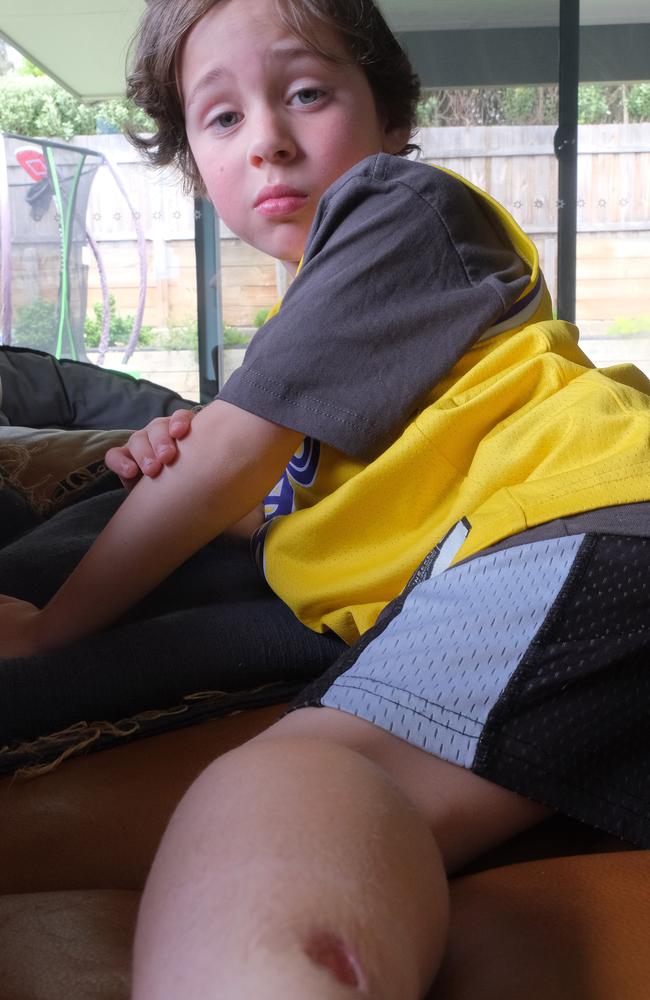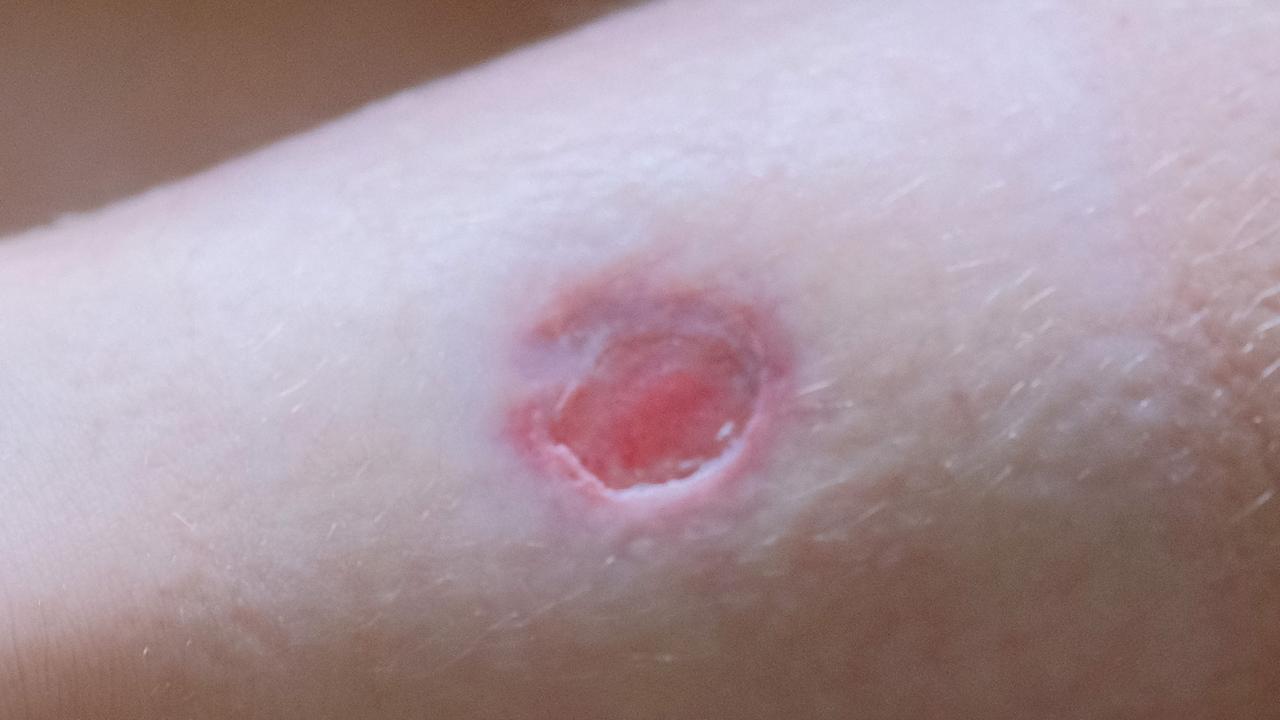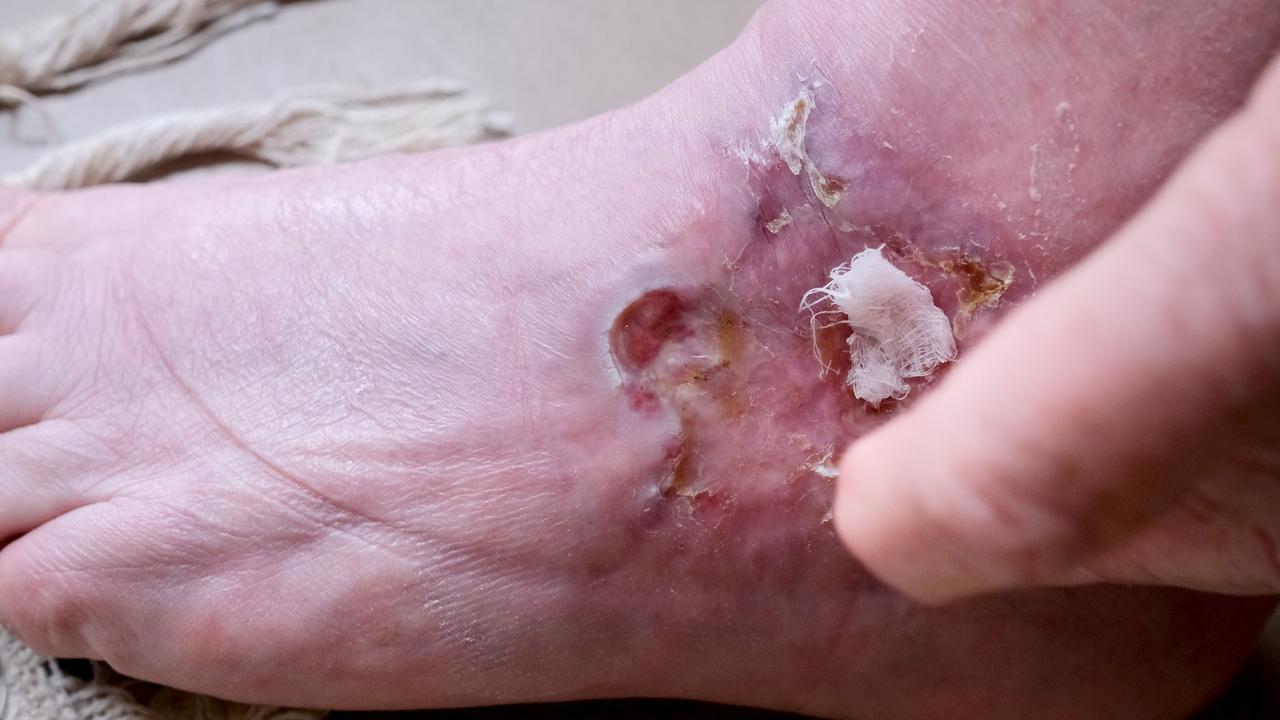Health officials warn flesh-eating ulcer spreading to new Geelong suburbs
A Highton mum is urging the community to be vigilant after her 7-year-old son contracted the Buruli ulcer, as cases rise in the region.

Geelong
Don't miss out on the headlines from Geelong. Followed categories will be added to My News.
A Highton mum is warning others to take measures to avoid the Buruli ulcer after her seven-year-old son caught the flesh-eating infection.
Buruli ulcer, also known as the Bairnsdale ulcer, is a skin disease caused by the bacterium Mycobacterium ulcerans.
The toxins made by the bacteria destroy skin cells, small blood vessels and the fat under the skin, which causes ulceration and skin loss.
Sarah Greaves said her son Harvey’s ulcer, which they noticed in July, was itchy and initially appeared to be a mosquito bite.
Soon the ulcer, located on the back of his leg near the achilles tendon, had grown to about 2.5cm wide and looked infected.

Harvey was taken to an emergency department in late July, and was referred to Barwon Health.
The grade one student underwent a biopsy – which Mrs Greaves said was “horrible” for him – and was diagnosed with Buruli ulcer.
Harvey took an eight-week course of antibiotics and required weekly medical appointments.
He underwent daily dressing changes, which his mum said were “so painful for him”.
Months after he was diagnosed the ulcer has finally begun to visibly heal and he has the dressing changed every two days, which is not hurting as much.
Mrs Greaves said Harvey had remained active throughout the ordeal but had missed a lot of school due to appointments.
Research has shown that areas where humans are most frequently contracting Buruli ulcer are areas where soil, mosquitoes and possums are most frequently carrying the causative bacteria.

Mrs Greaves and the City of Greater Geelong had urged community members to take precautions to minimise their risk of contracting the Buruli ulcer.
Mrs Greaves encouraged people to take measures to avoid mosquito bites, and said she did not want other families to face the same situation hers had.
Health officials have warned the disease is spreading into new areas including Aireys Inlet and several suburbs of Greater Geelong, in particular Belmont, Highton, Wandana Heights, Newtown, Grovedale and Marshall.
This year is Greater Geelong’s worst on record for Mycobacterium ulcerans cases, with 40 recorded since January 1, according to health department data.
Not all Buruli ulcers look like ulcers – they can be nodules or red painful swellings of limbs.
The ulcer generally gets bigger with time, so early diagnosis and prompt treatment can minimise skin loss and make treatment easier.
Geelong council city services director Guy Wilson-Browne said while the city was working hard to safely reduce their numbers, mosquitoes were a natural part of the ecosystem and it was not possible to make a significant reduction in their population.
Officers are monitoring larval numbers across Greater Geelong and will be continually assessing and reviewing potential breeding sites over the coming months.
This includes applying treatments to drains, dams and easements where it is safe to do so.
“We are monitoring key sites where there has been a reported increase in mosquitoes in areas such as Eastern Park, Barwon Heads and Ocean Grove,” Mr Wilson-Browne said.
“The persistent rain means we’re likely to see higher mosquito numbers than in previous years and unfortunately the rain also limits the effectiveness of the treatments we have applied.”
See your doctor early if you have a slow-healing or suspicious skin lesion.
The disease is not transmissible from person to person.
Earlier: Health department issues ulcer warning
The health department has issued a warning as a flesh-eating ulcer spreads to new areas of Geelong.
Associate Professor Deborah Friedman, Victoria’s deputy chief health officer communicable disease, confirmed the disease was spreading across Victoria and was no longer restricted to specific coastal locations.
It is spreading into new areas including Aireys Inlet and several suburbs of Greater Geelong, in particular Belmont, Highton, Wandana Heights, Newtown, Grovedale and Marshall, health officials say.
Buruli ulcer, also known as the Bairnsdale ulcer, is a skin disease caused by the bacterium Mycobacterium ulcerans.
Greater Geelong has this year recorded its worst year on record for Mycobacterium ulcerans, with 40 cases since January 1.
The municipality’s highest annual record was previously 37 cases, recorded last year.
The toxins made by the bacteria destroy skin cells, small blood vessels and the fat under the skin, which causes ulceration and skin loss.
These lesions are usually painless.
Not all Buruli ulcers are ‘ulcers ‘ – they can be nodules or red painful swellings of limbs, often called cellulitis.
The ulcer generally gets bigger with time, and early diagnosis and prompt treatment can minimise skin loss and make treatment easier.
Associate Professor Daniel O’Brien, deputy director of the Barwon South West Public Health Unit, said the team and researchers from CSIRO Geelong were currently undertaking analysis of new cases and their locations to better inform the community and local GPs on where and how the ulcer is being acquired.
It is hoped that a better understanding of the ulcer can help minimise the risk of catching the
disease, help prevent its spread and help ensure early diagnosis and prompt treatment of those
infected.

“Our team here at the Barwon South West Public Health Unit of clinicians and epidemiologists, are working with patients, GPs, researchers at CSIRO Geelong and the Department of Health to identify cases as early as possible to help ensure early diagnosis and prompt treatment and also develop our understanding of possible causes of the ulcer and its spread,” he said.
“Although the exact mechanism of infection in humans is still under investigation, we do know that some precautions can possibly reduce the risk of infection.”

Research has shown that areas where humans are most frequently contracting Buruli ulcer are areas where soil, mosquitoes and possums are most frequently carrying the causative bacteria.
Infections are more likely acquired in the warmer months.
Prevention measures include reducing mosquito breeding sites, avoiding mosquito bites and covering cuts and abrasions with a dressing when spending time outdoors.
See your doctor early if you have a slow-healing or suspicious skin lesion.
Prof Friedman said while everyone was susceptible to infection and disease could occur at any age, Buruli ulcer notifications were highest in people aged 60 years and above in Victoria.
The disease is not transmissible from person to person.
Laboratory testing for Buruli ulcer can be conducted for free for patients (although a handling fee may still apply).
More Coverage
Originally published as Health officials warn flesh-eating ulcer spreading to new Geelong suburbs







